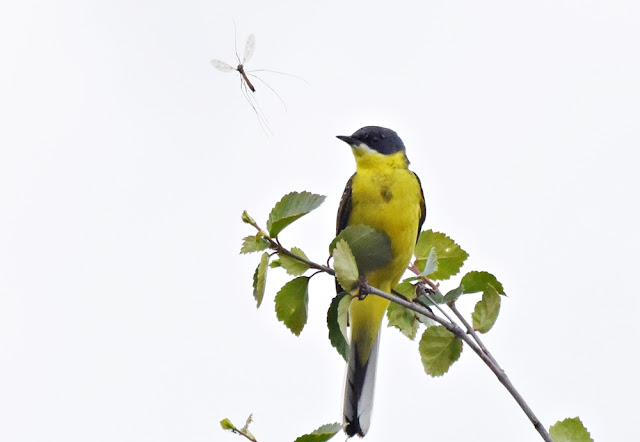 |
| An adult male Flame Robin Petroica phoenicia |
Winter is almost over in Canberra and the first of the Spring migrants are moving in, as I have seen on a few recent August days up in the nearby Brindabella Ranges, in the Namadgi National Park. The White-eared Honeyeaters were the most vocal with their chopping calls, there were a few Flame and Scarlet Robins, back from their winter quarters in the lowland paddocks and woodland, but most of the birds had yet to return.
The forest was rather quiet overall. At this time of year the characteristic sound is that of singing lyrebirds. These birds reside there all year and lay their eggs in mid-winter when snow is on the ground. Their incubation takes several weeks and the single chicks take several more weeks to fledge. So, perhaps they need to lay early to give the young time to grow over their first year.
 |
| A small part of the heavily forested Brindabella range |
I first counted lyrebirds in the area in 2001 and 2002, before the catastrophic bush fire which burnt out most of their habitat in January 2003 - over a hundred thousand hectares. As I had those counts, I have been counting them in the years post-fire to measure how their numbers have compared over the years since.
They came back slowly from single birds singing along transect lines, to similar numbers as pre-fire after several years. Now however, their numbers are dropping and on one transect there have been no birds for two years. The reason? One might be because the fire destroyed so many trees and most of the ground cover including the leaf litter, that the regrowth has come up thickly with grasses, shrubs, ferns, and saplings all competing for space. That has created a dense mass of vegetation at ground level. Lyrebirds need leaf and bark litter to forage in for invertebrates, their main food, and leaf litter needs space to collect on open ground.
 |
| A Superb Lyrebird Menura novaehollandiae forages on an open part of forest floor |
It is good to see the forest recovering, but it will take many more years for the full structure of the mature forest to re-establish. The lyrebirds will survive, and once the saplings grow tall and shade out the lower plants, the ground cover will open up and leaf litter will build up, then the lyrebirds will have more foraging habitat.
 |
| Thick regrowth smothers the forest floor - no room for leaf litter to collect and lyrebirds to forage |
The open ground is also an important habitat feature for other birds such as the robins. The Flame and Scarlet Robins both hunt by perching on a low branch, then swooping down to catch invertebrates they see on open ground. As there is now so little of that under the close ground covering vegetation, they are largely restricted to hunt in what open spaces there are. The main ones being those along the forest roads.
 |
| The artificial open ground of a forest road - but leaf litter only collects along the edges |
There were robins hunting along most of the roads, which made bird-watching of them easy. I wondered how many there were hunting in the thick vegetation. However, the bush where I tried to walk in for a look was impenetrable, wandering off the track was not an option. There are some open spaces, and there will be lyrebirds and other ground-foraging birds there. And there will be more in future as the forest grows into shape.
 |
| A male Scarlet Robin Petroica boodang hunts from a perch above the forest road |
The open roads are also good for insects as they allow sunshine to reach the ground. It is cold up in the ranges and insects benefit from the extra sunshine through the gaps. What amazed me was how the robins were mostly catching small insects that I could not even see. Butterflies were easier to spot as they spend much time basking in the sun. Such as the Australian Painted Lady butterflies that were out sunning themselves last week.
 |
| An Australian Painted Lady Vanessa kershawi basks in the sun on a forest road (note the specific blue centres to three ocelli on the hindwings) |
The Australian Painted Lady is a migrant butterfly and these were probably some of the first to arrive in the area. Soon the forest will be busy, and noisy once the large numbers of migrant birds return.
 |
| Flame Robins are rather smart-looking birds |










































